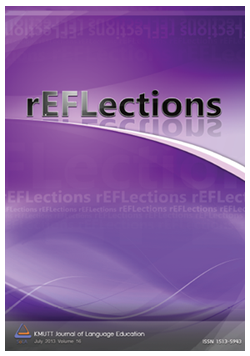Teacher Use of Acts in Activity Transitions
Main Article Content
Abstract
This study was conducted to investigate a teacher’s use of acts in the transitions and the differences between acts in different types of transitions. The subject of this study is a non-native teacher from an in-sessional English course for postgraduate students at King Mongkut’s University of Technology Thonburi. The instrument used for data collection was video-recording. The data were transcribed and analyzed to find the acts used in activity transitions and the differences between acts among types of transitions by using ‘The Birmingham School of discourse analysis’ framework of Sinclair and Coulthard (1975). The result revealed that there were six types of acts used in transitions. Marker, Silent Stress, Starter, Meta-statement, Conclusion, and Comment were all found in inter-activity transitions but Starter and Comment were not identified in intra-activity transitions. The forms and functions of Meta-statement were different but the context positions remained the same for these two types of transitions. Uttering words and statements in transition time can be used to focus or frame students. The study suggested that teachers should have a clear purpose before uttering words because the purpose can change students’ interaction or attention in transitions.


